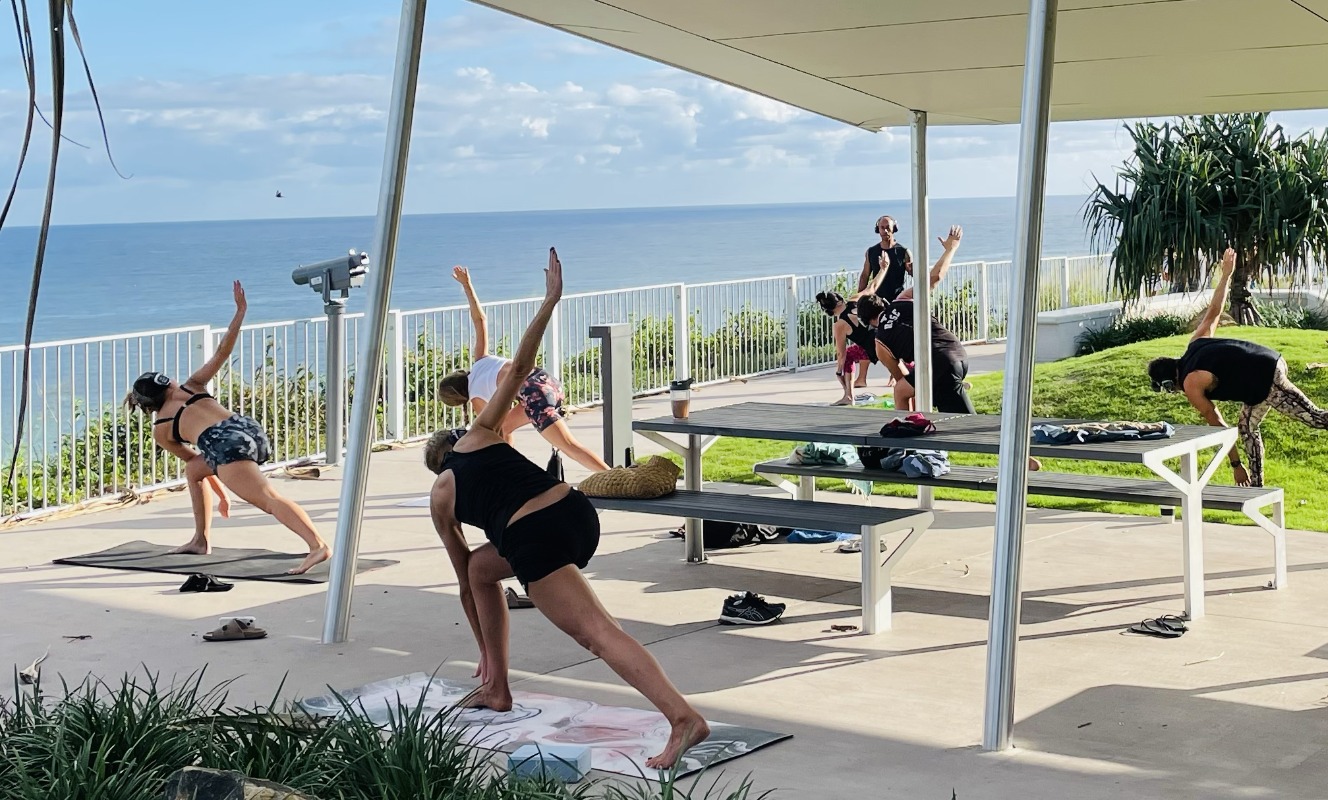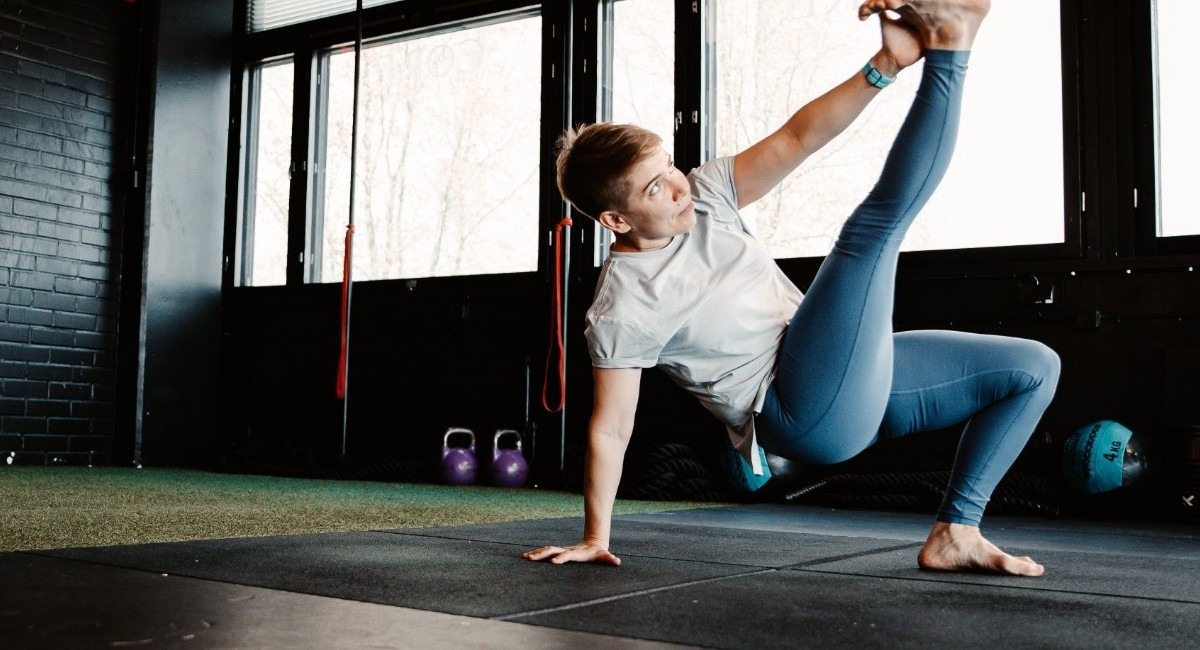
Strength Training Over 40: The New Longevity Secret.
“Discover how strength training after 40 can transform your body, boost longevity, and enhance quality of life. Learn why building muscle, improving bone density, regulating hormones, and increasing functional strength are essential for aging gracefully, preventing disease, and maintaining independence. This guide reveals the science, strategies, and secrets to living stronger, healthier, and longer in midlife and beyond.”
💪 Fitness Guru
44 min read · 14, Aug 2025

Introduction
For decades, the pursuit of longevity focused on diet, cardiovascular health, and stress management. While these remain important, modern science reveals a compelling new truth: strength training may be the ultimate longevity booster—especially after age 40. Once considered the realm of young athletes or bodybuilders, resistance training is now recognized as a powerful tool to slow aging, prevent disease, and maintain a vibrant, independent life well into later years.
After 40, the body undergoes changes—muscle mass naturally declines, metabolism slows, hormones shift, and bone density begins to decrease. This age-related muscle loss (sarcopenia) is one of the leading causes of frailty and loss of independence in older adults. But here’s the good news: strength training can reverse much of this decline, and in doing so, may be the most effective “anti-aging” practice available.
The Science of Aging and Muscle Loss
Around the age of 30, adults begin to lose 3–8% of their muscle mass per decade, and this rate accelerates after 60. Muscle is more than a tool for movement—it’s a metabolic organ that plays a role in blood sugar regulation, hormone production, and even immune function.
Why Muscle Loss Matters
- Loss of independence – Weakness is the number one cause of falls and fractures in older adults.
- Metabolic decline – Less muscle means a slower metabolism, increasing fat gain.
- Reduced bone density – Without the stress of resistance, bones weaken.
- Insulin resistance – Muscle is the primary site for glucose disposal; less muscle means higher risk of type 2 diabetes.
How Strength Training Changes the Game
Strength training stimulates the growth of both muscle and bone through a process called mechanical loading—when muscles pull on bones, they become stronger. Additionally, strength training triggers hormonal responses that counteract age-related decline.
Key Benefits:
- Prevents and reverses sarcopenia – Strength training signals the body to retain and build muscle.
- Protects bone health – Weight-bearing exercise increases bone mineral density.
- Improves insulin sensitivity – Helps regulate blood sugar and lowers diabetes risk.
- Enhances mobility and balance – Reduces fall risk by improving core stability.
- Supports mental health – Resistance exercise increases dopamine and serotonin.
- Boosts longevity – Studies show strength training is associated with lower all-cause mortality.
The Hormonal Advantage of Lifting After 40
As we age, key anabolic hormones like testosterone, growth hormone, and IGF-1 decline. Strength training has been shown to naturally stimulate the release of these hormones, which:
- Increase muscle repair
- Support fat loss
- Improve mood and cognition
Women benefit just as much—resistance training offsets menopausal changes, supports bone density, and helps maintain lean body composition.
The Best Strength Training Strategies After 40
Strength training over 40 doesn’t require heavy bodybuilding routines. In fact, a smart approach focuses on safety, progressive overload, and recovery.
1. Focus on Compound Movements
These exercises work multiple muscle groups at once, maximizing efficiency:
- Squats
- Deadlifts
- Push-ups
- Rows
- Overhead presses
2. Prioritize Proper Form Over Heavy Weight
Injury risk increases with age if form is neglected. Start light, master technique, then increase weight gradually.
3. Train 2–4 Times per Week
Consistency matters more than intensity. Two to four sessions per week can maintain and build muscle effectively.
4. Include Core and Stability Work
Core strength supports posture and balance—vital for fall prevention.
5. Don’t Skip Flexibility and Mobility
Dynamic stretching before workouts and static stretching afterward maintain joint health.
Nutrition: Fueling Muscle for Longevity
Strength training without proper nutrition is like planting seeds without watering them. After 40, protein needs increase due to reduced muscle protein synthesis.
Guidelines:
- Protein – 1.2–1.6 grams per kilogram of body weight daily.
- Healthy fats – Support hormone production.
- Complex carbs – Provide energy for training and recovery.
- Hydration – Muscle tissue is about 75% water; dehydration impairs performance.
Recovery: The Secret Weapon
Older adults need slightly longer recovery due to slower tissue repair. Incorporate:
- Rest days
- Quality sleep (7–9 hours)
- Active recovery (light walking, yoga, swimming)
Longevity Beyond the Gym
Strength training is a gateway habit—once people feel stronger, they often:
- Eat better
- Move more throughout the day
- Have better posture and confidence
- Stay more socially active (group fitness, walking clubs)
Studies have found that older adults who strength train live longer, but more importantly, they live better—maintaining independence, hobbies, and vitality.
Myths About Strength Training After 40
- “It’s too late to start.” – Research shows benefits even for people in their 80s.
- “Lifting will make me bulky.” – Hormonal profiles after 40 make excessive muscle gain difficult; you’ll become leaner, not bulkier.
- “Cardio is enough.” – Cardio supports heart health, but it doesn’t prevent muscle loss.
- “I’ll get injured.” – With proper guidance, resistance training reduces injury risk.
Sample Beginner Strength Training Plan (Over 40)
Day 1: Full Body
- Squats – 3 sets of 8–10 reps
- Push-ups – 3 sets of 8–12 reps
- Dumbbell Row – 3 sets of 8–10 reps
- Plank – 3 sets of 30–60 seconds
Day 2: Full Body
- Deadlifts – 3 sets of 8–10 reps
- Overhead Press – 3 sets of 8–10 reps
- Step-ups – 3 sets of 8–10 reps each leg
- Side Plank – 3 sets of 30 seconds per side
After the age of 40, the human body begins a gradual but noticeable transformation—muscle mass starts to decline at a rate of about 3–8% per decade, metabolism slows, bone density begins to weaken, hormones like testosterone and growth hormone decrease, and recovery from physical exertion takes longer; these changes are part of a natural biological process known as aging, but their effects on daily life can be profound, leading to loss of strength, reduced mobility, greater risk of injury, and ultimately, a diminished ability to live independently, yet modern science now shows that one of the most powerful ways to counteract these effects and promote longevity is strength training, a practice once associated primarily with young athletes and bodybuilders but now recognized as an essential component of healthy aging; unlike cardiovascular exercise, which primarily benefits the heart and lungs, strength training directly combats sarcopenia (age-related muscle loss) by stimulating muscle fibers to grow and adapt, increases bone density through mechanical loading, improves insulin sensitivity to help regulate blood sugar, enhances joint stability and balance to reduce fall risk, supports mental well-being by boosting neurotransmitters like dopamine and serotonin, and even stimulates beneficial hormonal responses that offset the decline in anabolic hormones; research shows that adults who begin resistance training in midlife or later can regain significant muscle and strength, sometimes rivaling those of much younger individuals, and these improvements are not merely aesthetic but functional, translating into better posture, increased ability to perform daily activities without strain, reduced likelihood of fractures, and greater confidence in movement; the hormonal benefits are particularly important, as strength training naturally encourages the release of testosterone, growth hormone, and IGF-1, all of which support muscle repair, fat metabolism, and cognitive health, making the practice equally beneficial for men and women—especially women navigating the hormonal changes of perimenopause and menopause, where bone density preservation becomes critical; a well-designed strength training program for those over 40 should prioritize compound movements such as squats, deadlifts, rows, push-ups, and overhead presses because they engage multiple muscle groups at once, maximize efficiency, and build functional strength, but the key is proper form and gradual progression rather than lifting excessively heavy weights from the start, since injury prevention becomes even more important with age; training two to four times per week with adequate rest days in between allows muscles and connective tissues the necessary time to recover and adapt, while incorporating core exercises, stability drills, and mobility work ensures that strength gains are balanced with joint health and flexibility; nutrition plays a pivotal role in making strength training effective, as protein needs increase after 40 to support muscle protein synthesis, meaning a daily intake of about 1.2–1.6 grams of protein per kilogram of body weight is recommended, alongside healthy fats to aid hormone production, complex carbohydrates to fuel workouts, and sufficient hydration to maintain muscle function; recovery, often overlooked, is as important as the training itself, with quality sleep of 7–9 hours per night, active recovery activities such as walking or gentle yoga, and deliberate stress management all contributing to the body’s ability to adapt positively to resistance exercise; the benefits of making strength training a lifelong habit extend well beyond physical appearance or even physical capacity, as people who maintain strong muscles into older age often report higher energy levels, sharper mental focus, improved mood, and a greater willingness to remain socially and recreationally active, all of which contribute to a richer quality of life; myths that discourage people from starting late—such as “it’s too late to see results,” “lifting will make me bulky,” or “I’ll get injured”—are contradicted by decades of evidence showing that even those in their 70s or 80s can gain substantial muscle and strength without becoming excessively muscular and that resistance training done with proper technique actually reduces injury risk by stabilizing joints and strengthening connective tissue; cardio remains valuable for cardiovascular health, but on its own it does not prevent muscle loss, making strength training an irreplaceable component of the longevity equation; a simple beginner plan might involve two or three weekly sessions alternating between exercises like squats, push-ups, dumbbell rows, deadlifts, overhead presses, and core planks, with each exercise performed for 3 sets of 8–12 repetitions at a weight that feels challenging yet allows for perfect form; in practical terms, strength training after 40 is about much more than just fighting the aging process—it’s about reclaiming control over your body’s abilities, preventing preventable decline, and investing in a future where you can move freely, pursue your passions, travel without limitations, and remain independent far longer than previous generations thought possible; while aging is inevitable, frailty is not, and those who embrace strength training as part of their lifestyle are not only adding years to their life but life to their years, making it truly the new longevity secret of our time.
After the age of 40, the human body begins to undergo a series of subtle but significant changes that, if left unchecked, can lead to muscle loss, slower metabolism, reduced bone density, decreased hormone levels, and a general decline in overall physical resilience, all of which contribute to a lower quality of life and increased risk of injury, yet strength training has emerged as one of the most effective strategies for counteracting these age-related changes and promoting longevity, as it directly addresses the root causes of functional decline by stimulating muscle growth, improving joint stability, enhancing bone mineral density, increasing metabolic rate, and supporting hormonal balance, with research showing that individuals who engage in consistent resistance training in midlife experience improved strength, mobility, balance, and cardiovascular health, and are less likely to suffer from conditions such as sarcopenia, osteoporosis, insulin resistance, and type 2 diabetes, which are commonly associated with aging, moreover, strength training is not just about building muscle mass but also about improving functional capacity, meaning the ability to perform everyday tasks such as lifting, bending, climbing stairs, and maintaining posture without fatigue or pain, and this functional improvement has profound implications for independence and quality of life as one grows older, further, strength training stimulates the production of key anabolic hormones such as testosterone, growth hormone, and insulin-like growth factor 1, which naturally decline with age but play critical roles in muscle repair, fat metabolism, bone health, mood regulation, and cognitive function, making resistance exercise an essential tool for both men and women seeking to maintain vitality in midlife and beyond, particularly for women who experience hormonal fluctuations during perimenopause and menopause that accelerate muscle and bone loss, while the type of strength training that delivers these benefits does not need to be extreme or complicated; compound exercises such as squats, deadlifts, rows, push-ups, and overhead presses are highly effective because they engage multiple muscle groups simultaneously, improving efficiency and promoting functional strength, and when performed with proper form and gradual progression, these exercises are safe and remarkably effective, with beginners often seeing measurable improvements in strength and energy levels within four to six weeks, and more significant gains in muscle mass, bone density, and metabolic health over three to six months, alongside the physical benefits, strength training has been shown to positively influence mental health by reducing symptoms of anxiety and depression, enhancing mood, increasing confidence, and supporting cognitive function, creating a holistic effect that enhances both body and mind, nutrition also plays a critical role in maximizing the benefits of strength training after 40, as protein requirements increase to stimulate muscle protein synthesis, with a recommended intake of 1.2 to 1.6 grams of protein per kilogram of body weight per day, complemented by healthy fats to support hormone production and complex carbohydrates to fuel exercise and recovery, while adequate hydration ensures proper muscle function and overall cellular health, recovery is another key component, as older adults require longer periods for tissue repair and adaptation, making rest days, quality sleep of seven to nine hours per night, and active recovery activities such as walking, yoga, or swimming essential for preventing overtraining and optimizing results, the cumulative effect of regular strength training combined with proper nutrition and recovery is profound, not only improving physical performance but also reducing the risk of falls, fractures, chronic disease, and premature mortality, while enhancing the ability to maintain an independent, active lifestyle well into older age, despite these proven benefits, myths persist that can discourage individuals over 40 from starting resistance training, including the beliefs that it is too late to see results, that lifting weights will lead to excessive bulk, or that the risk of injury is too high, yet scientific evidence demonstrates that even those in their 60s, 70s, or older can experience significant improvements in muscle mass, strength, and functional ability without becoming overly muscular, and that resistance training, when performed correctly, actually reduces the likelihood of injury by strengthening muscles, tendons, and ligaments, furthermore, while cardiovascular exercise remains important for heart and lung health, it alone cannot prevent muscle loss, bone weakening, or metabolic decline, making strength training a critical complement to aerobic activity, a typical beginner program for those over 40 might include two to three weekly sessions focusing on compound movements like squats, push-ups, dumbbell rows, deadlifts, and planks, performed for three sets of eight to twelve repetitions at a challenging but manageable weight, with attention to proper technique and gradual progression over time, and by consistently following such a regimen, individuals not only maintain and build strength but also enhance posture, balance, flexibility, energy levels, and confidence, all of which contribute to a longer, healthier, and more independent life, ultimately demonstrating that aging does not have to be synonymous with frailty or decline, and that strength training after 40 is not merely an exercise routine but a transformative practice that empowers people to take control of their physical destiny, supporting longevity and vitality in a way that few other interventions can, making it, without question, the new secret to living a longer, stronger, and more fulfilling life well into the later decades.
Conclusion
Aging is inevitable, but weakness and frailty are not. By incorporating strength training into your lifestyle after 40, you can take control of your physical destiny. The weights you lift today are an investment in the decades ahead—ensuring that you not only live longer but live stronger.
Q&A Section
Q1: Is it safe to start strength training at 50 or 60?
Ans: Yes, absolutely. With proper form, gradual progression, and medical clearance, people even in their 80s benefit from strength training.
Q2: How soon will I see results?
Ans: Most people notice improvements in strength and energy within 4–6 weeks, with significant muscle and bone benefits in 3–6 months.
Q3: Do I need a gym membership?
Ans: No. You can train effectively at home with resistance bands, dumbbells, or bodyweight exercises.
Q4: Should I still do cardio if I strength train?
Ans: Yes. Combining strength training with moderate cardio provides optimal heart and muscle health.
Q5: How heavy should I lift?
Ans: Choose a weight that challenges you in the last 2–3 reps of each set while maintaining perfect form.
Similar Articles
Find more relatable content in similar Articles

The Science of Breathwork: Fitness Beyond Muscles...
Exploring how conscious contro.. Read More

The Silent Workout: Fitness Without Any Equipment or Noise...
“Discover the power of silent .. Read More

Microbiome and Muscle: Gut Health as a Hidden Fitness Tool...
Unlock the hidden potential of.. Read More

Fitness Lessons from Wild Animals – Move Like Nature Intende..
“Discover how observing wild a.. Read More
© 2024 Copyrights by rFitness. All Rights Reserved.